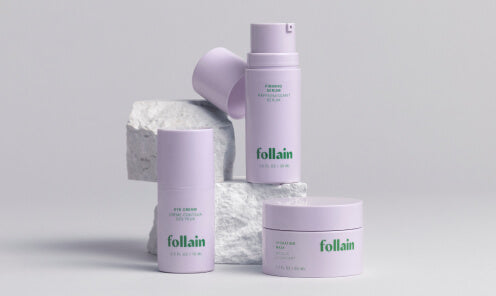Hyaluronic Acid is one of those ingredients that’s been around for awhile. It's found in many facial products touting age reversing properties. Widely favored by Dermatologists and Plastic Surgeons, it’s been continually featured in dozens of online posts and print media. Just google it, and you’ll find stacks of overwhelming information. So why is everyone still so obsessed?
For one: it really works. As a favorite ingredient, it boasts of keeping our skin plump and dewy, filling in fine lines and wrinkles, protecting against free radical damage and making sure our skin retains its moisture.
Check out what it can do when applied topically:
1. Reduces the appearance of fine lines and wrinkles: since it can hold moisture and deeply hydrate the skin, it can help smooth out the appearance of fine lines and wrinkles.
2. Plumps and moistens: a great source of hydration for very dry and dull skin, and by supporting our skin to hold more moisture it offers an experience of “plumping” and “glow”.
3. Protects: hydration is very important to helping the skin keep healthy and strengthening its barrier function; both integral to mitigating damage from environmental stressors, like sun exposure and pollution.
4. Strengthens, firms and tightens: Hyaluronic Acid’s amazing ability to attract and retain moisture supports the cellular structure of our skin.
So what is it exactly? And how is it a “clean” ingredient?
Simply put, Hyaluronic Acid (HA) exists naturally in our bodies, it’s present in the “goo” like fluid found in our joints, cartilage and eyeballs, making sure they all keep well lubricated. It’s also found in the space between our skin cells, and it’s a really important contributor to maintaining our skin’s moisture levels, which subsequently has a profound effect on our skin’s barrier function. It’s like a natural humectant that attracts water from the atmosphere and helps the skin retain it.
However, as we age, we produce much less of it, and we start to literally dry up. That’s why common signs of aging include the appearance of fine lines and wrinkles, creaky, stiff joints and skin that looks dull and shapeless.
As an ingredient that is added to skin care products like facial serums, lotions and creams, Hyaluronic Acid can be derived and manufactured via three different ways:
1. From plants like chicory root and senna seed; This method is a new and growing frontier that is using science to extract components from plants that have the potential to imitate the properties of the naturally occurring Hyaluronic Acid found in our bodies.
2. From animals like rooster combs and other types of animals fluids; This was the traditional extraction method, but now rarely used... and never allowed at Credo.
3. From fermented streptococcal bacteria; But now there are concerns of pathogenic residues... again, never allowed at Credo.
At Credo, we obviously prefer the plant derived sources, and support brands that continue to forge ahead exploring this new territory.
Shop Credo's products with Hyaluronic Acid

Osea Hyaluronic Sea Serum. This lightweight Hyaluronic Boosting Serum replenishes dry, depleted skin with age-defying seaweed extracts and antioxidants for a velvety luminous finish. Nature does it again.
Tata Harper Hydrating Floral Mask. A weekly floral hyper hydrating mask on a mission. Chock full of hyaluronic acid to take charge and recharge parched skin.

Evolve Organic Beauty Hyaluronic Serum 200. Magical hyaluronic acid meets cucumber extract to cool and soften with its soothing metal ball applicator to roll away inflammation & fatigue.















